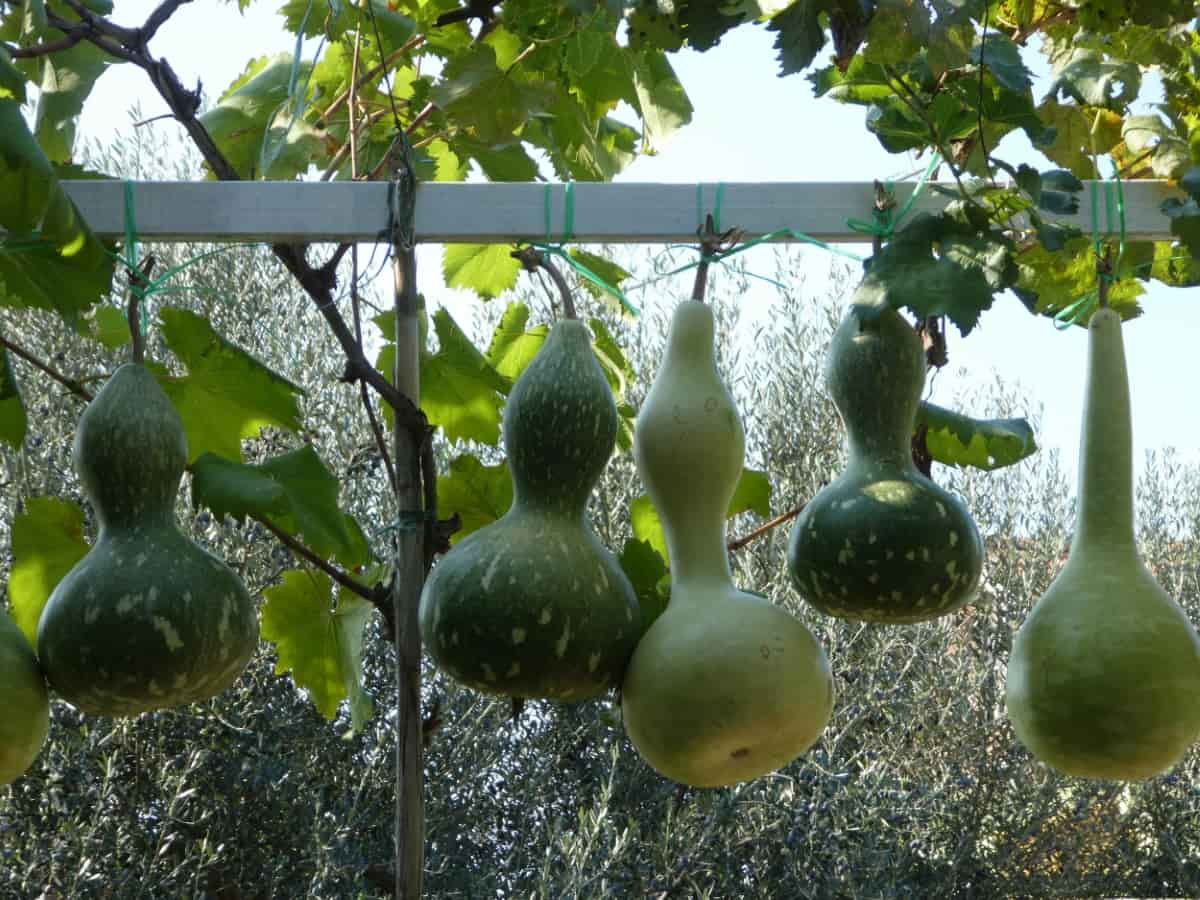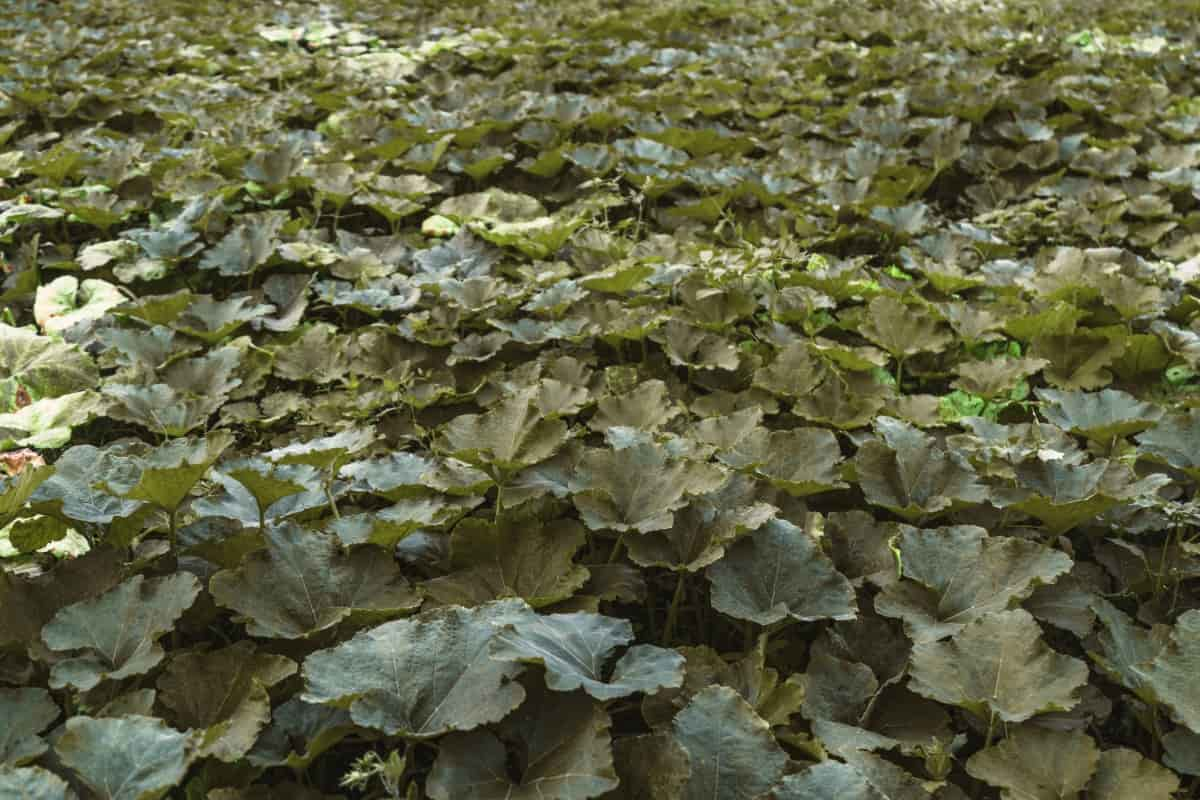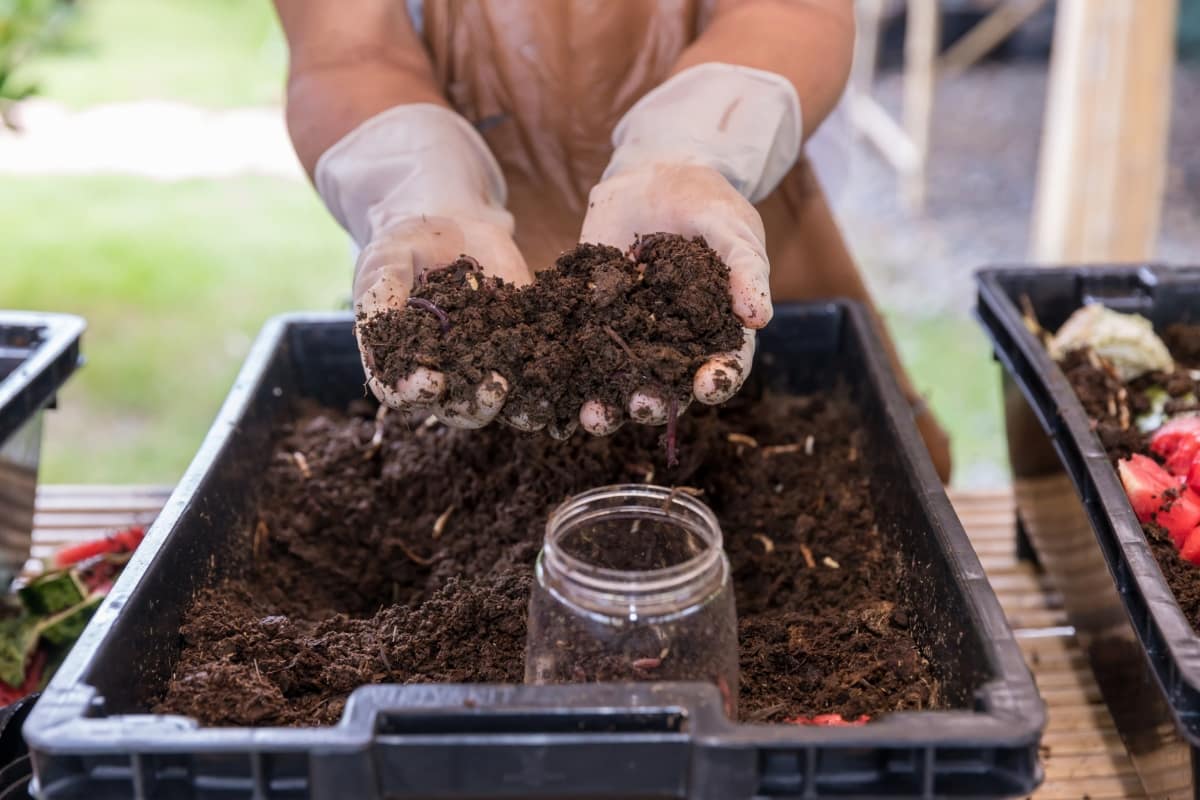Gourds include the fruits of some flowering plant species in the Cucurbitaceae family, particularly Cucurbita and Lagenaria. Gourd plants are typically vining plants with large leaves that provide ample shade for the developing fruits. It is a substance that provides essential nutrients to plants, helping them thrive and produce healthy yields.

How and When to Fertilize Gourds
Understanding the Nutritional Needs of Gourds for Optimal Growth and Yield
Gourds are heavy feeders that require rich soil with plenty of organic matter. This gives them the nutrients to develop strong roots and support vigorous growth. Organic Gourd fertilization methods provide slow-release nutrients without harming beneficial soil organisms, whereas synthetic fertilizers offer quick results but may lead to long-term soil degradation if overused.
Fertilizer timing for Gourds gives young seedlings the boost they need, while a second application once vines are established promotes continued growth throughout the growing season. To foliar feed your Gourd plants, mix a water-soluble fertilizer according to package instructions and spray it onto the foliage using a handheld sprayer. It’s best to apply foliar feeding of Gourd plants in the morning or late evening.
The Importance of Proper Fertilization Techniques for Gourd Plants
One important aspect of proper fertilization is understanding the specific nutrient requirements of Gourds. These plants require a balanced blend of macronutrients like NPK and essential micronutrients like iron, zinc, and manganese. Fertilizers with these nutrients in appropriate ratios can help promote healthy foliage growth, strong root development, and abundant fruit production.
Applying fertilizer at the right time during different stages of Gourd plant growth is vital. For example, feeding them twice – once at planting time and again when vines are 12 to 18 inches long – ensures continuous nutrient supply throughout their growing season. In addition to timing, choosing the right fertilizer for your Gourds is important. While organic and synthetic options have advantages, many gardeners prefer organic choices due to their environmentally friendly nature and potential soil improvement benefits.
Fertilizing Gourds: Dos and Don’ts
Dos
- Do test your soil before applying fertilizers. This will help you understand its nutrient composition and pH level, allowing you to choose the right fertilizer blend.
- Do use organic fertilizers whenever possible. They provide slow-release nutrients in the long run.
- Apply fertilizer evenly around each plant, avoiding direct contact with the stem or leaves.
- Do water your plants after fertilizing, as this helps nutrients penetrate the root zone.
- Follow a regular fertilization schedule based on your Gourd variety and local climate conditions.
Don’ts
- Don’t over-fertilize your Gourd plants, as excessive nutrients can lead to imbalances or even damage them.
- Don’t use chemical-based synthetic fertilizers excessively, as they can harm beneficial soil organisms.
In case you missed it: Benefits of 19-19-19 Fertilizer: When and How to Apply for Lawns and Gardens

Exploring the Role of Macronutrients in Gourd Fertilization
Macronutrients play a crucial role in the fertilization of Gourd plants, providing them with the essential elements needed for optimal growth and development. These primary nutrients include nitrogen (N), phosphorus (P), and potassium (K). Nitrogen is vital for foliage production and overall plant vigor.
Phosphorus aids in root development, flowering, and fruit set. It promotes strong root systems that can absorb water and nutrients effectively. Potassium contributes to overall plant health by regulating water movement within cells. It assists disease resistance, improves fruit quality, and enhances nutrient uptake efficiency.
Micronutrient Requirements for Healthy Gourd Plants
Iron is an important micronutrient for Gourd plants. Iron plays a vital role in chlorophyll production, which is necessary for photosynthesis and plant vigor. Gourd plants can suffer from yellowing leaves and stunted growth without sufficient iron. Another micronutrient fertilization for Gourds requires zinc. Zinc aids in enzyme function and promotes the synthesis of proteins and carbohydrates. A zinc deficiency can lead to reduced fruit set and poor quality fruits.
Manganese is also essential for healthy Gourd plants as it helps activate enzymes involved in various metabolic processes. It contributes to proper pollen germination, resulting in an improved fruit set. Copper is another micronutrient needed by Gourds as it assists with enzyme activity and cell wall formation. A lack of copper can result in wilting vines and decreased fruit production. Boron plays a significant role in pollination, seed development, and cell division within Gourd plants. Insufficient boron levels can cause hollow fruits or malformed seeds.
Organic Vs. Synthetic Fertilizers: Which is Best for Gourd Cultivation?
Organic fertilizers are natural sources such as compost, manure, and bone meal. This can lead to healthier Gourd plants with more robust root systems. Additionally, organic fertilizers are environmentally friendly and sustainable. On the other hand, synthetic fertilizers are chemically formulated with specific ratios of nutrients. They deliver fast-acting results and can be easily tailored to meet the nutrient requirements of Gourds. However, they may not improve soil health in the long run and can potentially harm beneficial microorganisms.
In case you missed it: How to Apply 14-14-14 Fertilizer: Nutrient Composition, Uses, and Benefits

By choosing organic fertilization methods for your Gourd crops (or any other plants), you ensure healthy growth and contribute positively towards environmental sustainability. Choosing between organic and synthetic fertilizers for Gourd cultivation depends on your preferences and gardening goals. Organic fertilizers may be your best bet if you prioritize eco-friendliness and long-term soil health improvement. However, synthetic options may suit you better if you want quick results or need precise nutrient management.
Timing and Frequency of Fertilizer Application in Gourds
These are crucial factors in ensuring Gourd plants’ healthy growth and productivity. Feeding Gourds twice during their growing season is recommended to maximize their potential. The first fertilization should be done at planting time, providing essential nutrients for the young seedlings as they establish themselves in the soil. This initial boost sets a strong foundation for future growth.
As the vines develop and reach 12 to 18 inches, it is time for the second round of fertilization. At this stage, Gourds are actively growing and require additional nutrients to support their development. When choosing a fertilizer, opt for a granular slow-release formula low in nitrogen. The best NPK requirements for Gourds, such as 5-10-10 or 6-12-12, would provide adequate nutrition without promoting excessive vegetative growth.
The Impact of Soil pH on Gourd Fertilization
Soil pH requirements for Gourd fertilization play a crucial role in the fertilization process for plant growth. It affects nutrient availability and uptake, ultimately impacting their growth and productivity. Ideally, Gourds thrive in slightly acidic to neutral soil with a pH of 6.0 to 7.0.
Addressing Common Nutrient Deficiencies in Gourd Plants Through Fertilization
One common nutrient deficiency in Gourd plants is nitrogen deficiency. This results in yellowing of leaves and reduced overall vigor. To rectify this issue, applying a fertilizer with higher nitrogen content can boost healthy plant development. Another common deficiency is potassium deficiency. Symptoms include weak stems and poor fruit quality. Applying a potassium-rich fertilizer can help replenish this essential nutrient and promote stronger plant structure and better fruit production.
Phosphorus deficiency may also pose a problem for Gourds, especially during the early stages of growth, when it affects root development and overall plant health. Using a phosphorus-enriched fertilizer at planting time can alleviate this issue. In addition to these macronutrients, micronutrient deficiencies like iron or magnesium may also hinder Gourd plant growth. Applying specialized fertilizers containing these micronutrients or foliar sprays can address such deficiencies.
Sustainable Fertilization Practices for Gourd Crop Health
One important aspect of sustainability is using organic fertilizers. These natural alternatives provide essential nutrients without harmful chemicals and excessive runoff. Compost is an excellent choice for sustainable Gourd fertilization. Another option is green manure cover crops, such as clover or vetch, which can be grown between Gourd planting seasons to boost soil fertility naturally.
In case you missed it: Benefits of Mineral Fertilizer Sticks: How to Use for Indoor Potted Houseplants

Crop rotation is another vital practice for maintaining a sustainable Gourd crop. By alternating different crops each season, you prevent nutrient depletion that often afflicts monoculture systems. Water management plays a crucial role in sustainable fertilization as well. Proper irrigation techniques ensure nutrients reach the plants’ roots while minimizing water waste. These are the best fertilizer application techniques for Gourds.
Conclusion
Understanding the nutritional needs of Gourds is key to providing them with the necessary nutrients for healthy development. By utilizing organic matter and aged organic manure, you can make an ideal growing environment for your Gourd plants to thrive. The best fertilizer for Gourds includes plenty of organic matter and aged organic manure.
- Feed Your Flock for Less: Top 10 Tips to Save on Chicken Feed
- Ultimate Guide to Ossabaw Island Hog: Breeding, Raising, Diet, and Care
- Hatching Answers: The Top 10 Reasons Your Chickens Aren’t Laying Eggs
- Eggs and Economics: Breaking Down the Cost of Raising Backyard Chickens
- Defend Your Greens: Proven Methods to Keep Iguanas Out of Your Garden
- Ultimate Guide to Cinnamon Queen Chicken: A Comprehensive Guide for Beginners
- Ultimate Guide to California Tan Chicken: Breeding, Raising, Diet, Egg-Production and Care
- Ultimate Guide to Marsh Daisy Chicken: Breeding, Raising, Diet, and Care
- 10 Types of Chicken Farming Businesses You Can Start for Profits